Ensure your strategic plan succeeds with your educational partners’ input








Strategic Planning in Education – 3 Keys to Success
Effective strategic planning is critical for creating positive change in your district. Among the many benefits, strategic plans align educational partners with a shared vision, mission, and values; promote productive decision-making; and help students reach their full potential.
While having a plan in place will usually improve results, strategic planning can present challenges—resulting in endless meetings, countless goal and tactic revisions, and plans that are never fully realized.
In this post, we explore strategic planning in education, touch on some K-12 planning tips, and share three best practices for making strategic planning successful in your school district. With your community’s insights and the right tools, you can win at strategic planning. Here’s how.
In this Article
See ThoughtExchange in Action — Explore the Product Tour
What is strategic planning in education?
Strategic planning is the process of setting goals, deciding on actions to achieve those goals, and mobilizing the resources needed to take those actions. A strategic plan describes how goals will be achieved using available resources.
While the concept initially stemmed from business practices due to people moving from the private sector into educational leadership positions, many strategic planning tools and paradigms have been adapted to focus on engagement and consensus.
This is because effective strategic planning requires community support at the school district level, both functionally and legislatively. School districts of all sizes use strategic planning to improve student outcomes and respond to changing demographics while staying within the given funding box.
In top-performing schools, leaders have proactively shifted their strategic planning process to include their educational partners. They know that their strategic plans are more likely to succeed with community support and the insights that come with community engagement.

Strategic planning tips for K12
Strategic planning is key to setting students up for success in K-12 and beyond. A solid strategic plan articulates a shared vision, mission, and values, increasing engagement while providing a framework to ensure students’ needs are met so they can reach their full potential.
Your strategic plan will benefit from your district’s input. Here are a few effective ways to engage your district in K-12 strategic planning.
Tap into your educational partners’ wisdom
Your educational partners have valuable insights. Consult teachers, staff, students, parents, and community members throughout the planning process, so your strategy aligns with their perspectives.
Whether you’re setting strategy at the district, school, or department level, consulting diverse participants will uncover unbiased insights, enhance trust and buy-in, and ensure greater success with new strategic directions.
Using ThoughtExchange, leaders can scale their engagement to efficiently and effectively include their community in their district strategic plans.
Use climate surveys
Completed by all students, parents/guardians, and staff, school climate surveys allow leaders to collect participants’ perceptions about issues like school safety, bullying, and mental health and well-being, as well as the general school environment.
ThoughtExchange Surveys get you both nuanced qualitative and robust quantitative data with instant in-depth analysis, ensuring your district understands all angles of school climate. Run surveys independently or combine them with Exchanges for faster, more accurate results.
Users can:
- Collect benchmark comparisons while tracking and measuring improvements over time
- Gather quality quantitative data for reporting to state agencies or funders
- Identify outliers and trends across demographic groups
Put in some face time with town halls, meetings, or listening tours
In-person gatherings like town halls, meetings, and listening tours are effective ways to understand your educational partners’ wants and needs to ensure they line up with your strategic priorities.
When managed effectively, they give staff and other educational partners the chance to closely interact. In-person gatherings can build trust and morale, promote transparency, and help create a sense of purpose.

Leverage community engagement platforms
Community engagement software lets you streamline your community engagement initiatives. It allows education leaders to gather feedback and get tens, hundreds, or even thousands of people on the same page in just days. It also facilitates candid, collaborative community conversations that help districts realize their goals.
A comprehensive community engagement platform like ThoughtExchange allows you to integrate your strategy with your community and take decisive, supported action in less time. It provides planning, scheduling, and analysis tools to help you quickly set strategy and monitor execution.
3 keys to strategic planning success
1. Get everyone on the same page
Make sure your educational partners are on the same page by allowing them to contribute to and shape your strategy from the start. Lack of alignment about what strategy involves can hinder even the best plans. So the first step in creating a successful strategic plan is getting everyone involved to provide their insights and opinions.
Letting your people know you’re listening and that their insights affect decisions, builds trust and buy-in. Your community will be much more likely to support—not sabotage—a strategy or decision.
2. Be a collaborative leader
According to ThinkStrategic, creating a school strategic plan should always be a collaborative process. Avoiding a top-down approach and getting input from educational partners will help minimize blind spots and unlock collective intelligence. It will also ensure everyone is committed to the plan. Get all community members involved in how to make the most of the school’s possibilities.
Commit to becoming a collaborative leader and put a plan in place to ensure you can achieve that goal. That may include implementing technology that can support scaled, real-time discussion safely and inclusively for students, teachers, and other educational partners.
3. Get a holistic view of your district
Getting a holistic view of your educational partners’ wants and needs helps you build more inclusive, supported strategic plans.
Depend on a platform that meets all your engagement needs in one place—from surveys to Exchanges—and allows you to consult more people in an inclusive, anti-biased environment. You’ll reduce the time and resources spent on town halls and meetings, and reach your district’s goals more efficiently and effectively.
Engagement and survey software has been proven to contribute to more effective strategic planning in education. It empowers leaders to run and scale unbiased engagement initiatives where they can learn what the people who matter really think—explore ThoughtExchange success stories to learn more.




